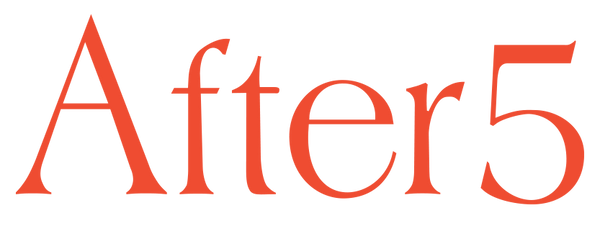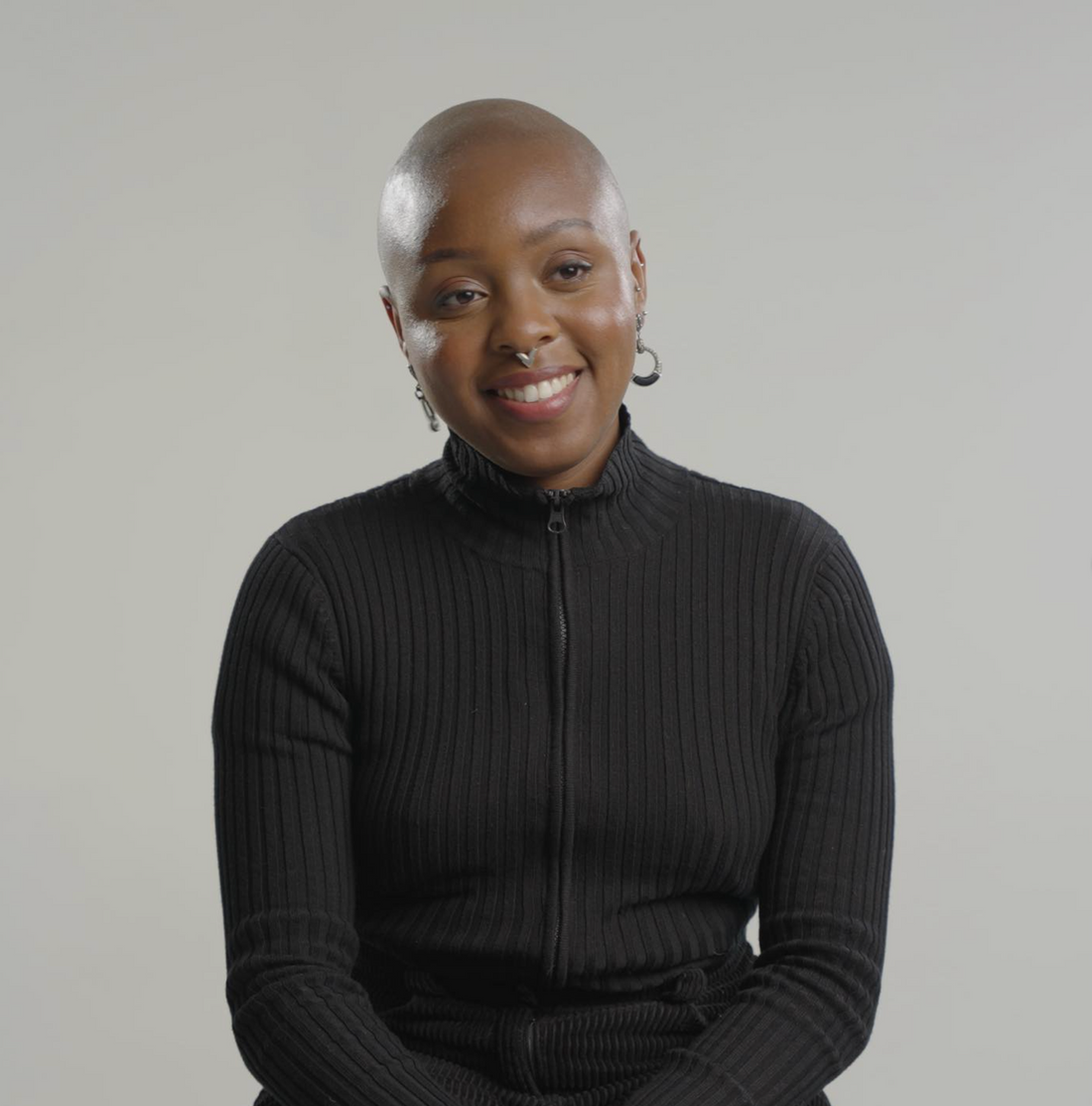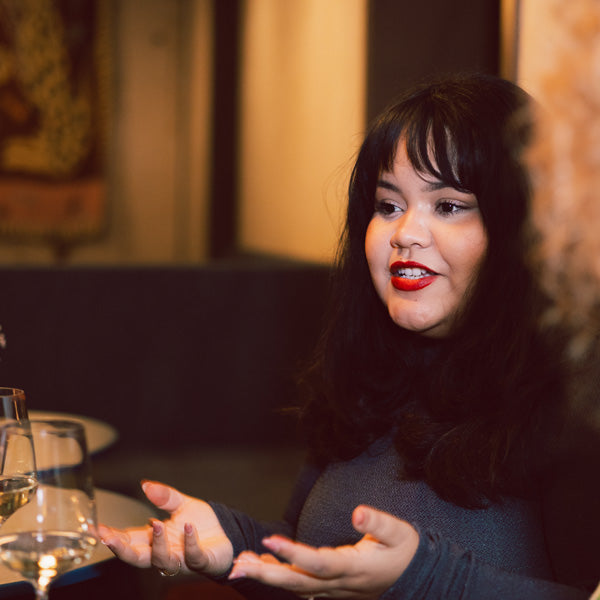After5 is in conversation with Rayvenn Shaleigha D'Clark, (29) a London-based digital sculptor renowned for her internationally acclaimed work. She has exhibited alongside esteemed artists such as Tracey Emin, Ai Weiwei, Joseph Beuys, and Banksy. Her sculptures have been acquired by private collectors worldwide and showcased in prestigious venues, including Carl Freedman Gallery, Gucci Circolo Shoreditch, Mall Galleries, the Royal College of Art, the Victoria & Albert Museum, and Saatchi Gallery. D'Clark has also appeared on art programs such as Next Big Thing (Jan 2021), Arte TV (Jan 2023), and BBC Live, where she champions emerging creative talent in the UK and advocates for addressing industry inequalities through sustainable business models.
Falling into Sculpture I kind of fell into sculpture while studying at University (Chelsea College of Arts, UAL). I always enjoyed a sense of visual realism in my work, but wanted to move towards a style of making which was of a more tactile nature. By my second year of study, I switched to sculpture, focusing on figurative and portrait work. Initially, I made silicone masks (such as Untitled ‘2016’), and the high level of detail I could produce fascinated me eventually this led me to 3D printing. I don’t even know how my brain made that link to the use of such specialised technology, but the tech-side and need to problem-solved really drew me in.

Experimenting with 3D Printing By my third year of study, I was deep into the tech and beginning to experiment with 3D. It’s an expensive practice with a high barrier to entry (the industry remains male-heavy), but it’s hugely fun. The integration of 3D printing is growing across sectors—art, tech, and even the medical industry, such as dentistry. I’ve been lucky to learn from collaborators and friends in the industry. In 2021, I joined my agency MTArt, and they have helped me scale up my practice, improve my technical skills and this led to a major artwork project in United States at the Freedom Monument Sculpture Park in Montgomery, Alabama.
A Fluid Practice I love research and collaboration. My practice is hugely diverse—it moves between making art, research across my own practice and for others, and industry partnerships/collaborations. My friends always tell me to post more on Instagram, but I’m more focused on the work itself and the tech behind it – I am trying to be beter at sharing my workflow with more consistency across my social media. It’s a slow practice, but that allows for exploration across different fields.
Major Commission and Recognition I was successful in winning a large commission award to produce a new, permanent public art project in the US; this was huge for my agency and myself personally and professionally. We spent an entire year building the project blending research with technology. The project was historic for a number of reasons, which added further narrative depth to the work. We later won a casting award for the project a year later at the Cast Metals Federation Award 2024 for ‘Best Component’, and its profile has been growing ever since.

Navigating a Complex Practice Unlike painting or drawing, my work isn’t straightforward. It involves scaling up and problem-solving at every step which is a challenged I continue to welcome. The last few years have been about figuring out how to make my practice sustainable—balancing my ongoing research interests which fuel my practice, grant and bid applications, and creative work more broadly.
Teaching and Community Work I have taught as HE for several years now which undeniably adds a community-driven aspect to my practice. It keeps my mindset creative and allows me to stay engaged in research-led work across a variety of institutions and settings.
How Do You Do It All? Honestly, I don’t always know! My partner asks the same question. I just giggle and fein a response which adds to the mystique. In truth I am highly self-motivated and also a chronic thinker—I like solving problems. My work involves short term and long term planning, connecting with people and places (placemaking), and conducting research. Whole days are often lost just thinking; other days, I’m in full action mode.
Competition vs. Community in Art It’s both. The art world is highly competitive, especially online—Instagram, TikTok, everyone is an artist now which is great to see. I love that creativity is accessible, but on the other hand this makes genuine and authentic visibility tough. My agency is pushing me to build an online presence, which feels like another full-time job, but thy often know what works best in the long-term..
My practice is tech-focused, and I haven’t seen many people doing exactly what I do. Digital fashion and other fields have tech-driven insights, but my niche is quite specific. That gives me space to carve out my own path, but it also means navigating a unique set of challenges that have been negotiated before which can also have challenges..

Being a Woman in a Male-Dominated Field Sculpture has a high barrier to entry—it’s expensive, and it’s historically male-dominated. The tech is slightly more open, but still male-heavy, industry-driven which requires huge financial backing. I’m often in spaces where there are no women or where women are in office roles rather than hands-on making. I call it out when I see it, but I also collaborate strategically to navigate these spaces.
The influence of friendship on you as a person and an artist Friendships play a crucial role in shaping both my personal and artistic identity. In the art world, where networking is vital for future projects and research, true friendships provide more than just professional connections—they offer a sense of support and balance. My friendships serve as moments of respite, reminding me to slow down, reflect on my achievements, and find encouragement during challenging times. I am lucky enough to have friends from across the world, and this has only ever been a benefit – enriching my worldview – and broadening my artistic perspective and reinforcing a sense of global citizenship in my practice. Ultimately, friendships contribute to a deeper, more meaningful creative journey.
Achieving more with friendships My friendships have played a vital role in helping me achieve greater things in personal and professional life by offering a space where I can step away from the intensity of my work and/or personal challenges and embrace different aspects of myself—whether that be someone who is playful, nervous and unsure, or excitable. This ability to shift away from a work-focused mindset is crucial for me to be able to recalibrate and find balance, ultimately fostering a greater sense of curiosity and creativity. By providing moments of relaxation and contentment, my friendships enable me to return to my research and artistic practice with renewed energy, allowing me to improve, grow, and strive for greater achievements.
Friendship and staying grounded Friendships keep me grounded by providing a sense of stability and perspective amidst the demands of my work and creative pursuits. My friends remind me to take breaks, celebrate achievements, and not get lost in stress or self-doubt. They offer honest feedback, support me through challenges, and encourage me to stay true to myself. By surrounding myself with people who understand and uplift me, I am able to maintain balance, humility, and a deeper appreciation for both my personal and artistic journey.

The Role of Collaboration Collaboration is essential. Large projects, like my US commission, require multiple partnerships. We worked with a maker-designer team in Brighton called millimetre and fabricators in Germany. The logistics were intense—designing in the UK, fabricating in Germany, and shipping it to US in under eight months. Scaling up always requires a network of people.
The Myth of the Lonely Artist There are moments of solitude, especially in research phases, but otherwise my practice is highly collaborative. The bigger the project, the more people are involved. It’s chaotic at times, but when everyone is aligned, it’s a beautiful process.
What Inspires Your Work? Growing up in the UK, I never saw Black artists being discussed. It wasn’t until college that I realized they existed. That blew my mind. I also noticed the lack of public sculptures of women—especially Black or Brown women. That absence got me thinking: who decides what sculptures are placed in public spaces?
You are changing that narrative with your own sculptures, how do you pick your subjects? I don’t pick complete strangers. My work is about everyday heroes—people I have a primary relationship with. Some have suggested using celebrities, but that’s not what I’m interested in. I choose people I know—friends, family, colleagues—because it's about the relationship and the conversation we have throughout the process of making, which adds further narrative depth to the work.
Where do you find your inspiration? My grandma was a big inspiration. She passed recently, and one of my solo exhibitions included a piece of her. In a Q&A segment, a friend in the audience asked about the piece, and I just burst into tears. That sculpture will always be close to my heart. My dad is also represented in my work, as well as a close friend who I met at university. Sometimes, it’s just about the right moment—if the opportunity arises, we go for it.
As an ambitious woman, how do you keep evolving? People assume I know everything, but I’m still learning. Technology keeps evolving, and I don’t have all the answers. I always tell students: stay a lifelong student. That curiosity is key. Collaboration is also crucial—I don’t do everything myself, and I make sure to credit everyone involved.

Connect with Rayvenn
Website: www.rayvenn-dclark.com
Instagram: @rayvenndclark_art
Linkedin: https://www.linkedin.com/in/rayvenn-shaleigha-dclark/


